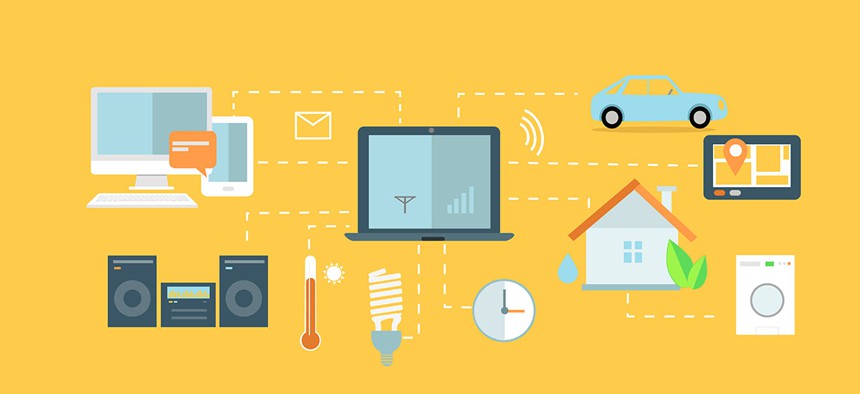In 5 Years, Machines That Talk to One Another Will Be the Internet’s Biggest Population

robuart/Shutterstock.com
The internet today is driven by smartphones, tablets and personal computers. It won't always be that way.
The internet today is driven by smartphones, tablets and personal computers: devices that deliver information for human consumption. In five years, those devices will be in the minority, outnumbered by machines designed to communicate with one another in “smart” homes, offices, cities, and cars, according to Cisco’s annual forecast of internet trends.
Cisco expects massive growth in “machine to machine” devices through 2021. Such devices will represent 51 percent of all internet-connected devices at the end of that forecast period, Cisco predicts.
What will all those machines be chattering about with one another? Mostly about things to do with smart homes—lights, temperature and the like. More than 6 billion devices will be embedded in our homes by 2021, Cisco says. Several billions more will be scattered throughout offices, hospitals, factories and stores.
Personal devices like smartphones and tablets have hit a saturation point, says Shruti Jain, a senior analyst at Cisco.
“We are definitely going to get better smartphones and television sets, but there is a limit to how many more we can buy,” she says. “For the first time, we’ll definitely see internet of things applications having the largest share by device type.”
Cisco's annual forecasts have proved reasonably reliable in the past. The company's 2012 prediction for global online traffic growth over five years was within 1 percent of the actual growth stats, it said.
The internet of the near future will be an even more heavily trafficked place, if Cisco's latest forecast proves correct. This growth may not be apparent to humans, though, because it will be the bustle of machines that propels it.
NEXT STORY: Is it time to rethink the TIC?





